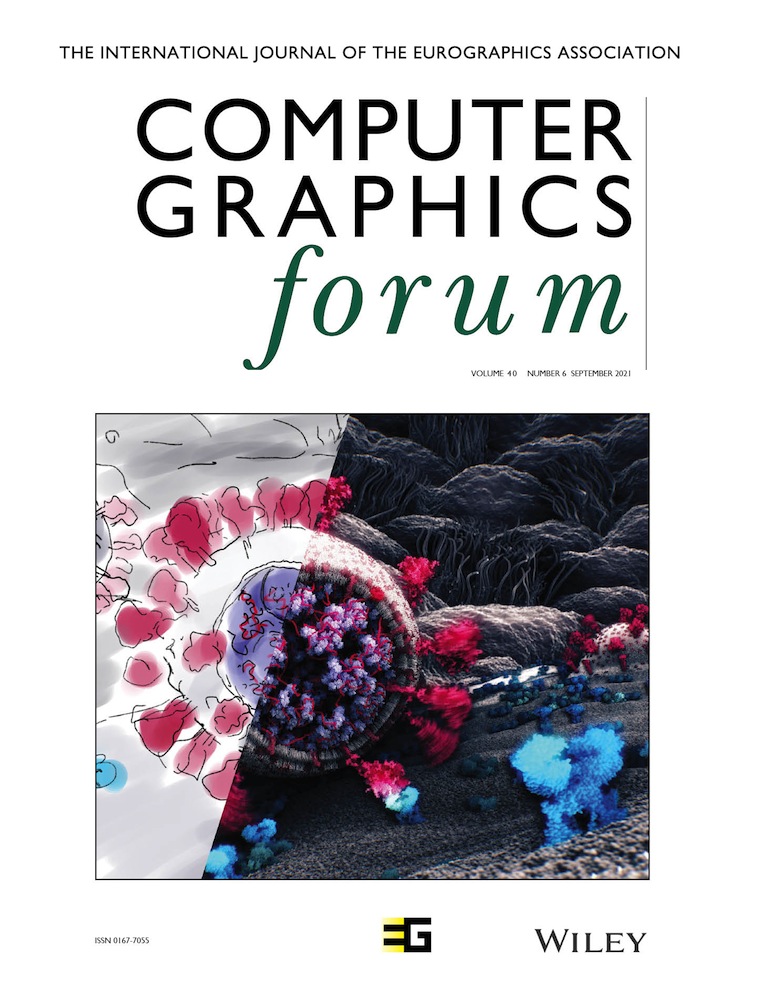SREC-RT: A Structure for Ray Tracing Rounded Edges and Corners
Abstract
Man-made objects commonly exhibit rounded edges and corners generated through their manufacturing processes. The variation of surface normals at these confined locations produces shading details that are visually essential to the realism of synthetic scenes. The more specular the surface, the finer and more prominent its highlights. However, most geometric modellers represent rounded edges and corners with dense polygonal meshes that are limited in terms of smoothness, while tremendously increasing scene complexity. This paper proposes a non-invasive method (i.e. that does not modify the original geometry) for the modelling and rendering of smooth edges and corners from any input polygonal geometry defined with infinitely sharp edges. At the heart of our contribution is a geometric structure that automatically and accurately defines the geometry of edge and corner rounded areas, as well as the topological relationships at edges and vertices. This structure, called SREC-RT, is integrated in a ray-tracing-based acceleration structure in order to determine the region of interest of each rounded edge and corner. It allows systematic rounding of all edges and vertices without increasing the 3D scene geometric complexity. While the underlying rounded geometry can be of any type, we propose a practical ray-edge and ray-corner intersection based on parametric surfaces. We analyse comparisons generated with existing methods. Our results present the advantages of our method, including extreme close-up views of surfaces with a much higher quality for very little additional memory, and reasonable computation time overhead.




